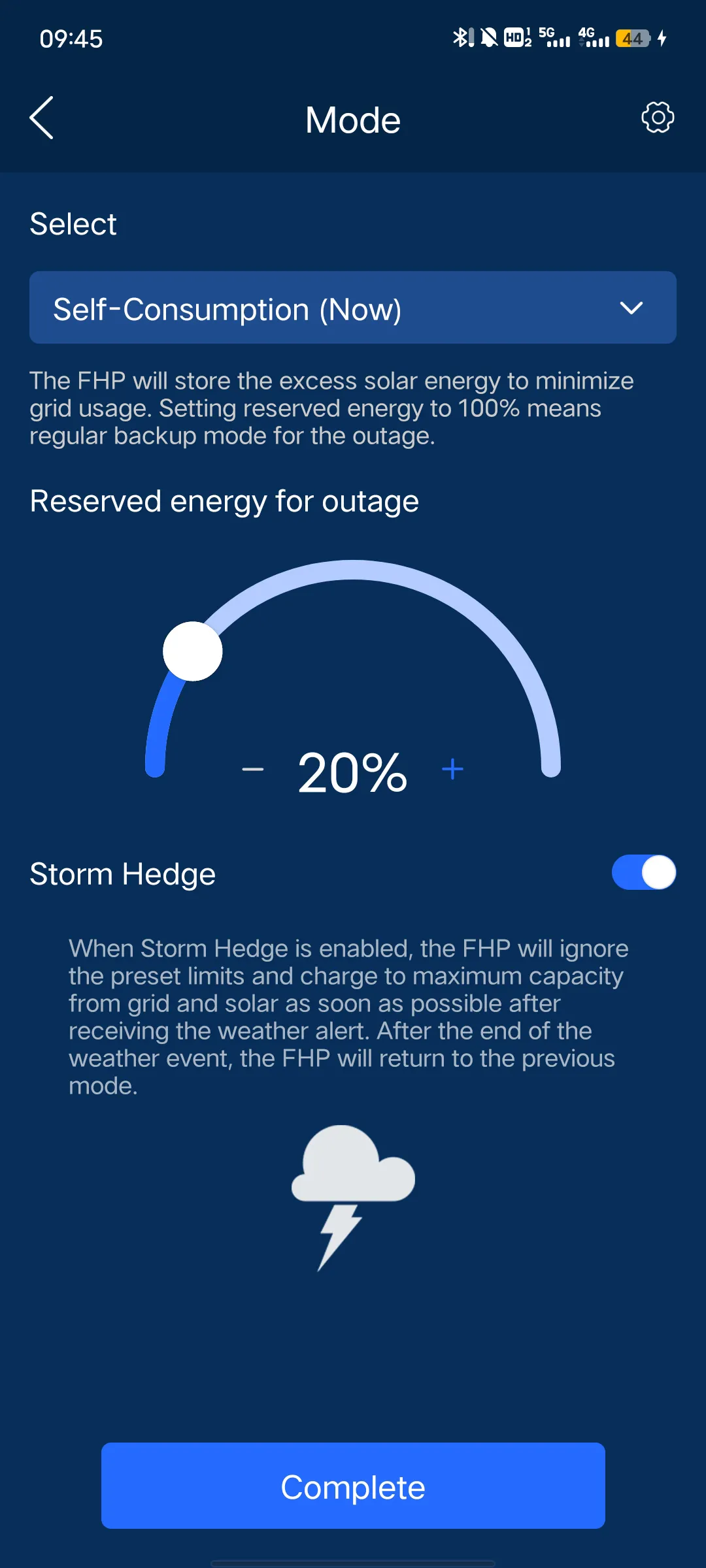The FranklinWH system has three primary operating modes, Self-Consumption, Time of Use, and Emergency Backup. Emergency Backup keeps the aPower batteries at 100% all the time to be ready for a power outage. However, most homeowners will run their systems in one of the first two modes for maximum efficiency and cost savings.
The Storm Hedge optional function in each of those modes allows for the system to move to Emergency Backup mode on notification by the National Weather Service, as recently happened in Texas.
Pop-up warnings
The FranklinWH App recently received notification of an extreme weather forecast in Texas. As a result, those FranklinWH systems with Storm Hedge enabled transferred to Emergency Backup mode immediately on the notification and sent a pop-up warning to each homeowner’s app.

Storm Hedge Operations
As the image shows, a homeowner can set a standard battery reserve for outages. This can work well for short-term outages. However, severe weather could cause a longer outage that batteries only charge to 20%, for example, would be unable to support.
Once in Storm Hedge mode, the FWH system prioritizes charging the aPower batteries to a 100% state of charge. The system then does not use the batteries for household power, relying completely on solar generation and the grid. If the grid has an outage, the batteries will then supply energy to the home. When the weather service notifies the FranklinWH App that the weather occurrence has passed, each homeowner’s app reverts to the regular operating mode.

Improved Home Safety and Energy Supply
In the Texas example, a massive power outage occurred due to the severity of the storm. Homeowners with Storm Hedge enabled were better prepared with fully charged batteries to retain power during the grid outage. They are well protected.
We recommend that FranklinWH homeowners enable Storm Hedge so that they can be better prepared when encountering extreme weather.




